How to start finding your cousins
using Ancestry research, DNA Testing, and Social Media
A little history…
Five years ago, my wife Linda encouraged me to research my diverse heritage. At the time, I knew only a little about the history of the Knight family. However, I could remember details about my Czech heritage, especially since I had visited my Janda grandparents – many times – in La Grange, Texas.
My goal was to trace the Knight family back to England – while collecting stories and historical photos of my relatives. In the process, I wanted to get in touch with living relatives and document their family history. I was hoping they might share photos and interesting stories
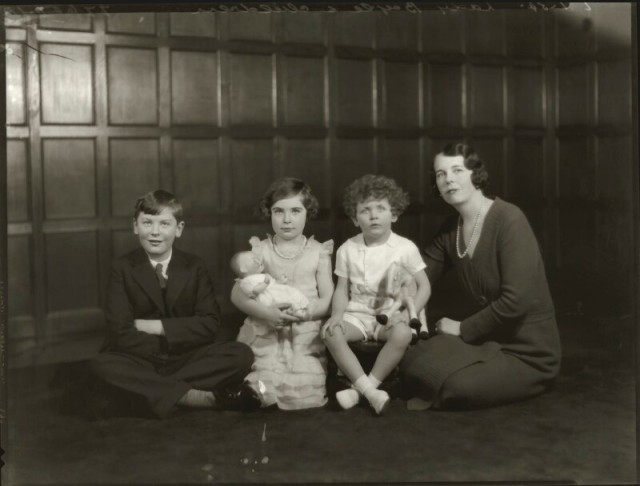
In addition, I sought to discover my maternal family roots in the Czech Republic. Naturally, I thought of many questions:
Why did my relatives decide to leave their beautiful homeland and venture to an unknown country?
What attracted them to Mexico or the USA?
(farmland, work, freedom, business, etc.)
How long did the journey take?
What did they do for a living? Were they farmers, laborers or businessmen?
Contacting close relatives helped me along the way to discover some answers.
Over the years, I have connected with over 200 cousins using Ancestry.com, Facebook and email. Recently, I expanded my reach by sharing family trees on FamilyTreeDNA, MyHeritage, WikiTree, and Geni.
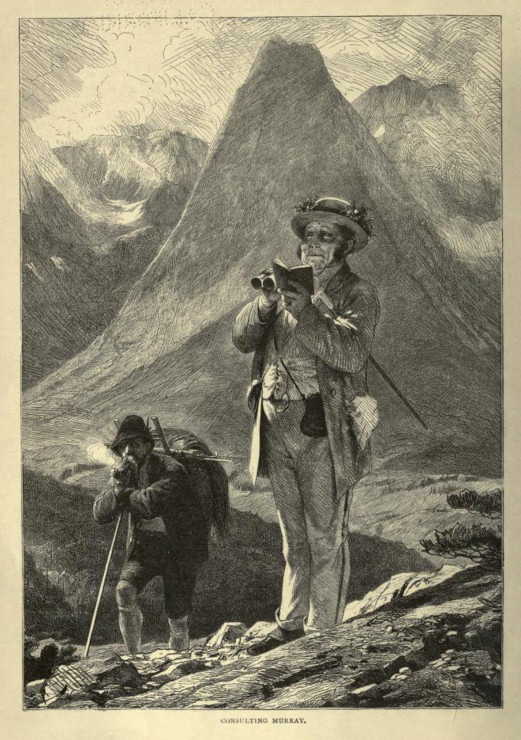
Photo: Samuel Manning, 3rd great-grandfather, explores the Alps. He wrote books about his adventures.
Casting a big net
Initially, I found several relatives by searching family trees shared on Ancestry.com. This kept me busy for a while – trying to figure out the various family lines.
Once I received my DNA test results, I started focusing on comparing the AncestryDNA matches. This was an exciting phase of the family research, since new matches were showing up daily. A number of cousins were found within the USA where DNA testing is becoming popular. But I didn’t get many matches to cousins in England in the Ancestry database.
Recently, I started using Family Tree, MyHeritage and GEDmatch Genesis to find cousins in other countries using DNA matching. This led to finding distant cousins living in Canada, England, Ireland, Mexico, Switzerland, Australia, and New Zealand. I also discovered relatives who are scattered across the United States, from Florida to Washington.
Many cousins, of all ages, are active on Facebook, so staying in touch is easier now.
Who are my cousins?
Definition of cousins:
Close cousins are descendant’s of one’s own grandparents, for example, the children of your aunts and uncles. Typically, people are acquainted with their cousins.
First cousin, once removed – The children of my great-uncle or great-aunt are related to me as 1st cousin, 1x removed. The child of my 1st cousin, is known as a 1st cousin, 1x removed. See the relationship chart below.
A “distant cousin,” also known as a collateral cousin, is a family member with whom you share a common ancestor, often many generations back. A distant cousin could live in the same city as you, but might be related as a 5th cousin.
Doublecousins. If a pair of brothers marries a pair of sisters, then their children are not only first cousins, they’re double first cousins. They have both sets of grandparents in common.
Half–cousins are the children of two half-siblings, and their respective spouses.
DNA shared with relatives
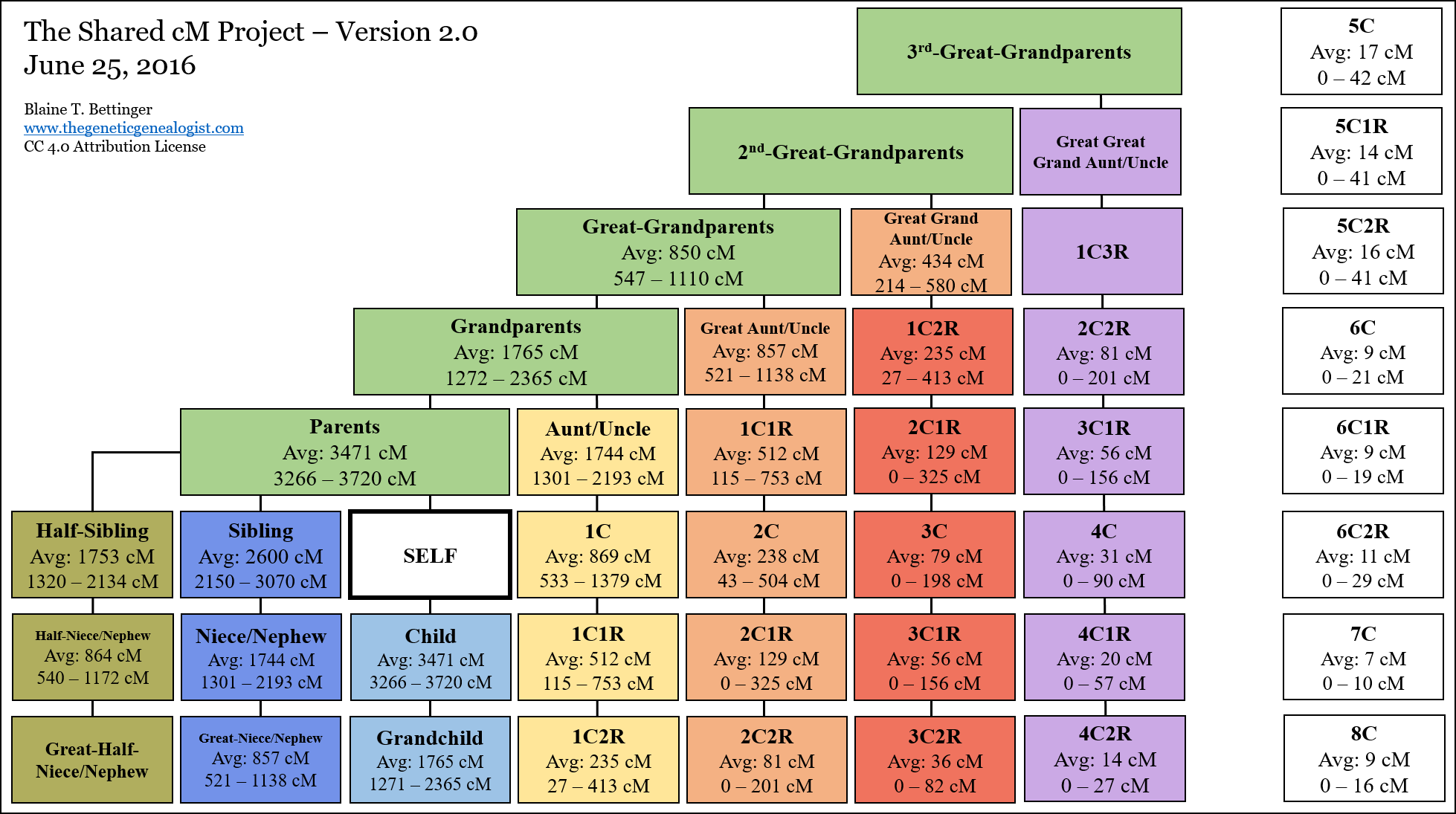
Sharing stories…
Next, I decided to share my discoveries by compiling family notes into short stories – posted on my blog.
Fortunately, the posts turned out to be the bait needed to reel in people from other countries. Distant cousins started sharing their unique stories and historic photos.

A while ago, I was contacted by Emily Shaw the owner of
Tower House – the former country home of great aunt Clara Manning. The Victorian home, with a working clock tower, was a popular place to stay for the Knights in England. Emily put me in contact with a local historian who is graciously researching my Manning and Taunton relatives in the Downton area.
In 2018, we visited Tower House, and learn about the history of the area. We walked around the graveyard of the Downton Baptist Church where we learned about relatives who farmed the area. It was a wonderful experience and I thank our generous hosts.
Storytelling works
The family profiles, that I post on this blog, have connected me we many more relatives. The stories are rich with content and family names, so the posts are easy to find using a Google search.
Finding my cousins is a rewarding journey. Here is what I recently found…
English Roots
Check out Hall Place estate owned the Hope-Morley family – related via my Hope cousin. Hall Place is a grand Victorian home with a lake and private gardens, located in the majestic Kent countryside.
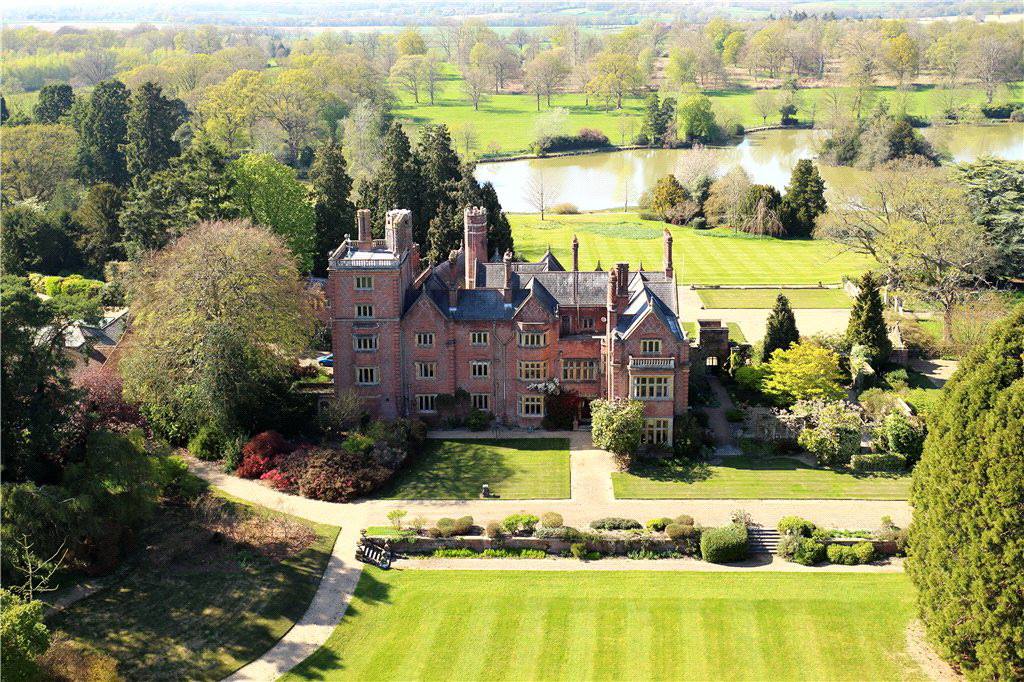
Last year, I connected with the Hope-Morley family who live in England. Some family members are listed in Burke’s Peerage, Baronetage & Knightage.
Samuel Morley, a hosiery and clothing manufacturer, was married to Rebekah Maria Hope (1st cousin 5x removed).
The Hope family is connected to The Royal Family.
Sarah Clegg Hope was the 2nd Great-grandmother of Camilla Rosemary Shand – aka Camilla Parker Bowles – Queen of England. Formerly known as the Duchess of Cornwall.
Camilla – my 5th cousin 1x removed – is married to King Charles III of England. So, Prince Harry and Prince William turn out to be my 6th cousins (step-cousins is an optional term, but rarely used).
About human DNA
Humans are much more similar than we think. All people share 99.5% of their DNA sequence in common.
Only the remaining 0.5% (one-half of one percent) differs from one person to another, making everyone unique.
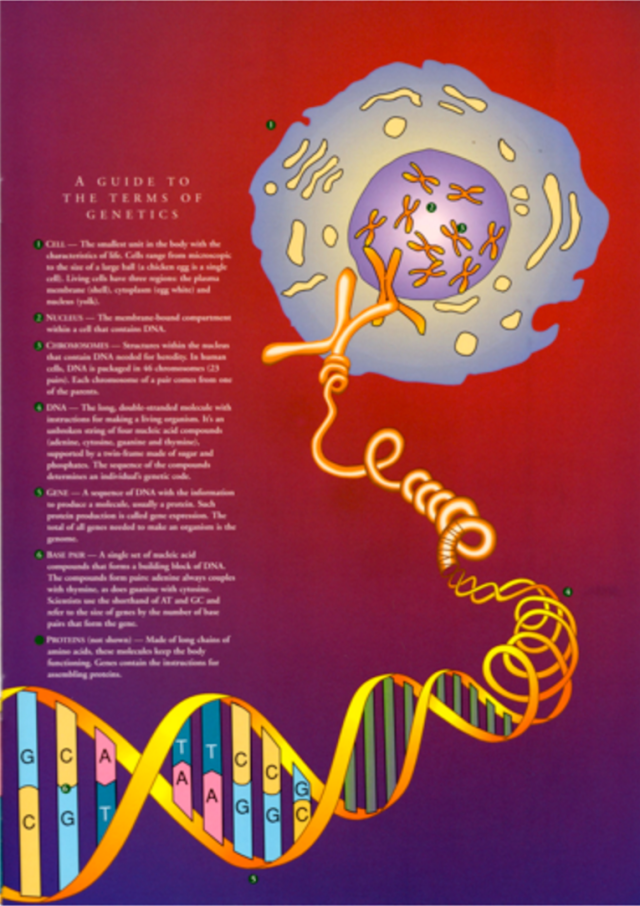
DNA Matches
For every DNA Match, the page displays the estimated relationship between you and the other person, based on the quantity and characteristics of the DNA that you share with that person. (MyHeritage)
How Cousins are Related1st – 4th cousins…
1st cousins, the children of your aunts and uncles – share a set of grandparents. Typically, you would have
4 biological grandparents – 2 maternal and 2 paternal.
1st cousin, once removed – The child of my 1st cousin, is know as a 1st cousin, 1x removed. The children of my great-uncle/aunt are related to me as 1st cousin, 1x removed. See the cousin chart.
2nd cousins, share a pair of great-grandparents.
There are 8 biological great-grandparents.
3rd cousins, share great-great-grandparents, also known as 2nd great-grandparents
4th cousins, share 3rd great-grandparents
Are you seeing the pattern here?
Check out the shared cM tool
Finding cousins around the world
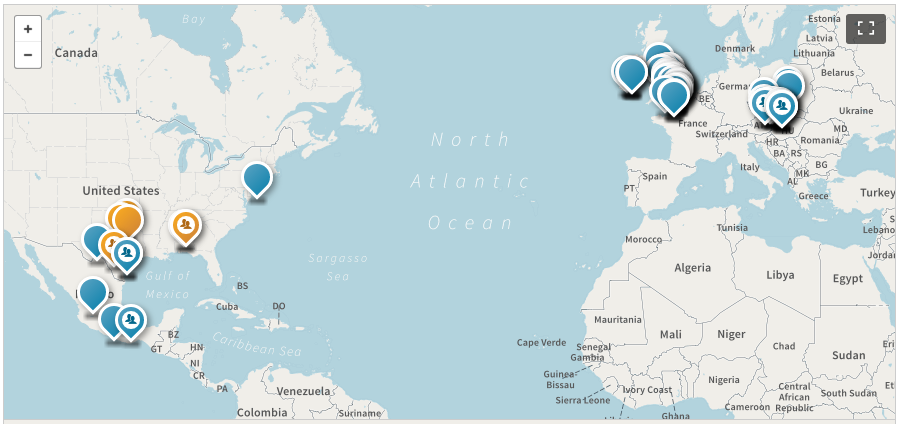
How I go about finding distant cousins…
• Talk to relatives and make a list of surnames
• Research ship Passenger records and Census records
• DNA matching
• Contact cousins via email, and social media
1st and 2nd cousins are often found in the same country. 2nd cousins share a set of great-grandparents.
Many of my Czech relatives immigrated to America in the late 1800s, after the Civil War. Most of them arrived at the port of Galveston, Texas. Ship passenger records can help with finding when relatives travelled and who was aboard the ship.
A few of my Mexican relatives moved, legally, to the states after 1930. Border crossing records can be helpful, but sometimes are faded and difficult to read.
3rd-6th cousins sometimes are found in other countries. Once the family left the farming trade, they had freedom to move about the world.
DNA Matching and Connecting with Cousins
Strategy for finding distant cousins…
• Find possible cousins via DNA matching services, using Ancestry.com, MyHeritage and GEDmatch. The hints give an estimate of how closely we are related – 2nd cousin, 4th cousin, etc. Then, try to figure out if the match is on the maternal of paternal family line. Are they from Eastern Europe, Ireland, Great Britain, Spain or Mexico? Who are their great-grandparents?
• Using the person’s name, location, and other hints, search the internet for possible matches. Sometimes they can be found on Facebook or LinkedIn. Others are found in phone directories and yearbooks.
• Next, send a brief email or text message with some background information about the family, and a hint about how you might be related. Mention a common relative and where they lived. Use a subject line that is sure to grab their attention and not sound like spam.
Try including the question…
“Can you tell me about your family?“
If they respond, then quickly follow up with a full description of your family and a family photo. Plus, you should answer questions that they may ask.
Surnames
Sorting out the surnames…
I recalled a number of Czech names that my mom mentioned over the years, but I didn’t know how they were related. So, I jotted some names down and started searching online. The Moravian Connection website turned out to be very helpful since it contains a huge list of relatives, including 64 Janda family.
When connecting with cousins, it helps to have a list of names to share, and where they lived. Often I asked possible cousins for the names of their grandparents and great-grandparents.
Next, you can read my list of family surnames.
Family Names and Origins
Maternal side – Janda/Dolezal Family
Origin: Austria, Czech Republic, Poland, Russia, Germany, Scandinavia
Surnames:
Janda, Jurek, Knezek, Konvicka, Kubala, Mockova, Kaspar, Klimicek, Dolezal, Markova, Rehak, Frankova, Siller, Novak, Uhry
2nd Great-grandparents:
Janda, Knezek, Kubala, Kaspar, Dolezal, Rehakova,
Siller, Uhry
Great-Grandparents:
Janda, Kubala, Dolezal, Siller
Grandparents:
Jerry Janda (1907-1984), Hostyn, Texas
Agnes Elizabeth Dolezal (1910-1999), Plum, Texas
Paternal side – Knight/Kenny Family
Origin: Central America, Great Britain, France, Ireland, Spain, and more…
Surnames:
Bakwell, Burgess, Chadwick, Fitchett, Hall, Halsey, Hope, Jones, McKeigue, Kenny, Kilkenny, Kilroe, Knight, Laws, Manning, Moore, Potts, Radford, Smith, Wood
2nd Great-grandparents:
Knight, Manning, Montiel, Barro, Kenny, McKeigue, Grady, Kilkenny
Great-Grandparents:
Knight, Montiel, Kenny, Grady
Grandparents:
John Knight Montiel (1901-1983), Veracruz, Mexico
Margaret Mary Kenny (1906-1973), New Jersey, USA
Ethnicity
Coming from a mixed heritage – like many people living in the states – I often have to respond to this question:
What are you?
I’m American – a mix of English, Irish, Czech, Mexican, Native American and more. All the best stuff.
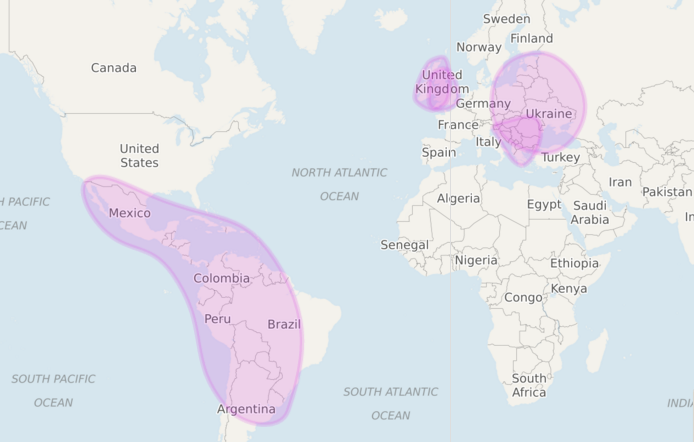
My Czech American cousins, who live in Texas, typically show this type of European heritage:
Ethnicity Regions: Europe East, Europe West
Trace Regions: Scandinavia, Iberian Peninsula
Europe East includes Poland and the Czech Republic. The Iberian Peninsula includes Spain and Portugal.
While my Mexican and American cousins show a more diverse heritage:
Ethnicity Regions: Europe West, Ireland, Native American, Scandinavia, Iberian Peninsula, Great Britain Trace Regions: European Jewish, Europe East
Europe West includes France, Switzerland, Germany
Note: real examples used above from Ancestry.com
The ethnicity estimation is based on reference populations that may or may not be accurate.
What am I?
DNA testing can help to determine your genetic heritage. The reports are good to the continent level, but are a rough estimate of the country or region of origin.
Ethnicity Estimates can vary…
Dr. Robert Knight, my father, was born in Mexico City. So, he had known Hispanic/Latino heritage. Although, initially I didn’t know much about his family line before starting this research project.
My great-grandmother, Modesta Montiel, was indigenous to Mexico – perhaps of Zapotec origin, known as the Cloud People. I estimated that I might be about 1/8th (12.5%) Native/Central American. However, Modesta’s last name “Montiel” indicated that she probably had some Spanish heritage on the paternal side. So, my percentage could be lower – maybe 10% Native/Central American.
The DNA Results…
According to one ethnicity estimate on Ancestry.com I am 9% Native American, and MyHeritage shows 14.5% Central American — based on the same DNA data!
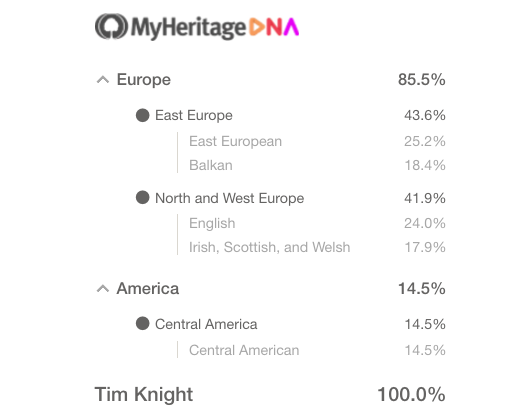
Building a Family Tree
Online resources, like Geni, help you to build a family tree using simple forms. The interface then builds as family tree of your relatives and displays their relationship to you. A few of my relatives have posted family trees on Ancestry.com, MyHeritage, Family Tree, and blogger. Some online services are free for creating a basic family tree. See the Knight family tree.
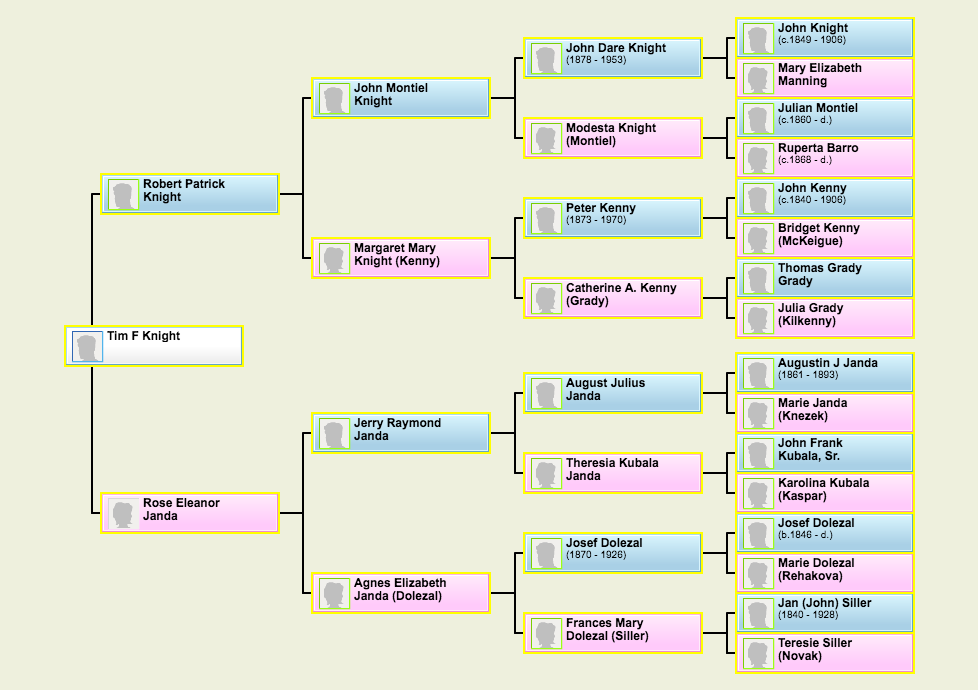
I started out writing down the names of my parents, grandparents and great-grandparents, including birth dates and where they lived. Next, I asked my mom for details on the family, and she sent me some information that she had received, in the mail, from other relatives.
Then, I started searching for relatives online and was lucky to find my aunt Peggy in Mexico. I sent an email to my aunt and she replied with details about her family and other relatives. She also sent stories and photos, which made me think of compiling this information into profiles to share online.
One thing I found out is that people, from all over, are willing to share what they know. Finding the family historian – or the person with the old photo archive – can make the family research go faster. Plus, they always have interesting stories to share.
Relatives outside the USA have sent me family trees – professionally researched and hand drawn – that helped me to build a reliable Knight family tree dating back to the 1600s.
Hiring a professional genealogist can be a good option for family research, since they know the how to quickly find, read and interpret historical records.
Genealogy (from Greek: γενεαλογία genealogia from γενεά genea, “generation” and λόγος logos, “knowledge”), also known as family history, is the study of families and the tracing of their lineages and history.
Where my cousins live
Paternal Roots in the UK and Ireland
Historically, the Knights were from England. They lived around Greater London for over 200 years. In fact, John Knight (b1792), my 4th great-grandfather, started a soap business in east London, during 1817, that is still running today. In the late 1800 the Knights started migrating to other countries.
My grandmother’s Kenny family came from Co. Galway, Ireland. Dozens of Irish relatives have been found.
Now, my Knight relatives can be found all over…
Australia, Canada, England, India, Ireland, Japan, Mexico, New Zealand, Philippines, Poland, South Africa, Spain, Switzerland, and USA.
Maternal Roots in Eastern Europe
Many Czech relatives, on the Janda side, are clustered near La Grange in Fayette County, Texas. Some can be found scattered around the United States – from Washington to Georgia. Distant cousins have been located in a few countries…
Australia, Czech Republic, Great Britain, New Zealand
Social Media
Facebook Photos
Posts with family stories, old photos, and throwback pics can be helpful.
Messenger
Connecting using FB messenger has worked well for me, especially with cousins in Mexico who frequently use Facebook. It turns out that many of my Mexican cousins are bilingual, but know Spanish phrases helps.
Blogging – Storytelling
Writing blog posts about relatives opens up the world to finding you. Several distant cousins contacted me after reading a post. Make sure to include your contact information at the end of the post.
Email
I use email for more detailed or private information. Email works well for sharing stories and photos.
Online Directories
Directories like the Whitepages, LinkedIn, or Radaris are useful resources. For example: If you do Google search for “Tim Knight Seattle” you should be able to find a little information about me.
How you can help…
– create a family tree online
– start writing down information about your family and keep a paper trail with sources and dates
– share family photos – include names and dates
– share interesting stories
– write blog posts
– participate in online forums
– share a list of your great-grandparents
– please check your email/messages
– Get your DNA tested!
Is there a DNA test for both maternal and paternal lines?
Yes, It’s the autosomal test, which is available from AncestryDNA, Family Tree DNA, MyHeritage, 23andMe.

DNA testing
What is DNA testing?
Your DNA contains information about your heritage, including ethnic and geographic origins of ancestors – when compared with others. DNA segments on chromosomes are past through many generations, and the testing service can compare your DNA segments with other people in the genetic database.
The autosomal DNA testing provides the raw data used to calculate your DNA matches and ethnicity. This genetic analysis covers all ancestral lines, both paternal and maternal.
AncestryDNA uses an autosomal DNA test that surveys a person’s entire genome at over 700,000 locations.
How DNA testing works
Order a DNA kit from a testing service, including AncestryDNA, FamilyTreeDNA, MyHeritage or 23andMe.
In a week, the DNA kit arrives at your address with instructions and a sample collection tube. You fill out the required information, then provide your saliva sample or cheek swab (depending on the service). Mail the DNA sample back to the lab in the same kit it came in—the postage is pre-paid.
Cost: $99, plus shipping
Note: special prices are available around holidays, plus mother’s day and father’s day.
While you are waiting to get the results back, you should start researching and building your online family tree. The family tree can be shared or private. Sharing your family tree helps other relatives to find you.
DNA processing and analysis in the lab takes several weeks. You get the results via email, including regions/countries of origin, ancestry by percentages, and more.
How long will it take to get results?
Once your kit arrives at our lab, it will take about 3–4 weeks for the results to be ready. Once results are available, we will notify you by email and the results will be accessible to you online. (MyHeritage.com)
What about DNA testing in other countries?
DNA testing is not available in many developed countries, but not all. Some countries have regulations on DNA testing services. Ancestry.com does not provide service for Mexico.
DNA Testing & Analysis
Suggestion: Take the AncestryDNA test, then upload the DNA file to other services for free.
AncestryDNA
The AncestryDNA test analyzes your entire genome—all 23 pairs of chromosomes. This genetic testing services is very popular in the USA. AncestryDNA test may predict if you are at least partly Native American, but it does not list the specific tribe. Ancestry subscription gives you hints that can guide your investigations and connect you with new relatives. Normally it takes about 6-8 weeks to process a DNA sample, so be patient. The web interface is professionally styled and easy to use. With over 16 million DNA tests in the database, this is the largest resource for finding a DNA match.
The AncestryDNA kit is $99, plus shipping $9.95. Discounts are available in the summer ($69) and
around major holidays ($59-$79).
Add Traits for $20 more
http://www.ancestry.com/DNA
23andMe
Get a breakdown of your global ancestry by percentages. Reports include: Ancestry Composition, Haplogroups, Neanderthal Ancestry, Your DNA Family.
In approximately 6-8 weeks, 23andme will send you an email to let you know your reports are ready in your online account. This large database of 10 million tests does not include a family tree option, so it’s of limited use for many people researching their family tree.
The DNA test, called ‘Ancestry Service’ costs $119.
Health + Ancestry Service is $229.
http://www.23andme.com
MyHeritage
Uncover your ethnic origins and find new relatives with a DNA test. Collecting your DNA sample involves a simple cheek swab. Availability in more than 40 languages and wide international reach increases the chances of being matched with relatives who live in other countries. The web interface is simple, and easy to use. You can setup a basic family tree for free and upload DNA results from another service. Instant Discoveries™ can help you find groups of relatives to add to your tree. Annual subscription is $10-15/month, with a discount for the first year. MyHeritage DNA testing results are available in 3 to 4 weeks. The DNA matching feature, with shared ethnicities and DNA matches, helps you to discover possible relatives. The new chromosome browser and triangulation tool make DNA research fun. The MyHeritage database includes 3.8 million tests as of early 2020.
MyHeritage DNA kit $99 ($39 +shipping – special price)
+ $12 shipping
http://www.myheritage.com/DNA
Family Tree DNA
Family Finder is the name of their autosomal DNA test ($89 USD). Family Matching – enhanced feature that enables users to sort confirmed DNA matches by maternal and paternal lines. myOrigins – mapping tool that provides a detailed ethnic and geographic breakdown of where your ancestors came from based on 18 Population Clusters. Family Finder, DNA test results are usually available in 4 to 6 weeks.
If you have previously tested your autosomal DNA at 23andMe© or AncestryDNA™, you can transfer your results to Family Tree DNA.
(Take advantage of this free offer.) The database has over one million tests, so the matching results are limited, in my experience.
http://www.familytreedna.com
GEDmatch – Not just for genealogists
GEDmatch provides DNA and genealogical analysis tools for amateur and professional researchers, and genealogists. Most online tools are free.
Upload your raw DNA file to GEDmatch, wait a few days, then you can compare your DNA for matches with others in the database with over a million users. The business was acquired by Verogen.com in California, so the 1+ million database should continue to expand.
DNA Kit Number/User Name:
A175184, T Knight
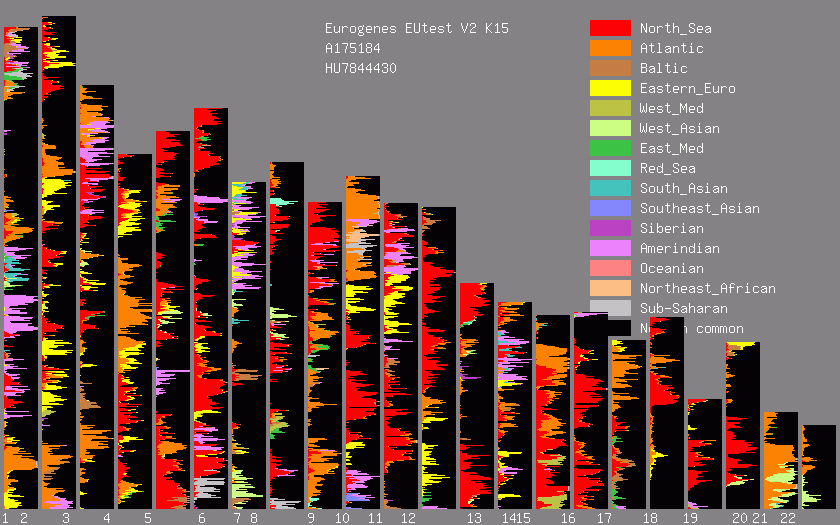
DNA.Land 2.0 – Free Ethnicity Report
DNA.Land is a place where you can learn more about your genome. The website is part of DNA.Land Genomics LTD, a Canadian company. Please note that the website is no longer associated with academic and research institutes. One goal of this service is to help you interpret genomic data from consumer genomics companies. For information read the FAQs
ANCESTRY
The original version of DNA.Land compared your DNA with reference data from different populations to see where in the world your ancestors might have lived.
See my Ancestry Composition report from DNA.Land website.
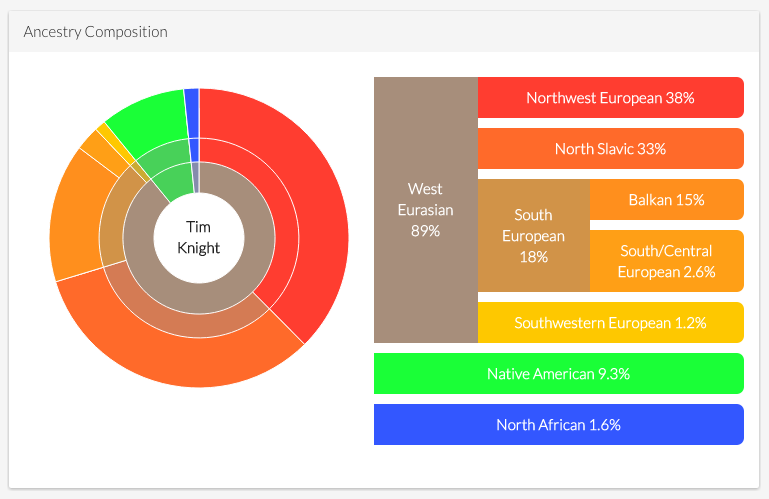
Native American 9.3% is a reasonable number based on my family’s paper records. Includes: Bolivian in (Cochabamba, LaPaz and Pando) Bolivia; Piapoco in Colombia and Mayan, Mixe, Mixtec, Pima and Zapotec in Mexico
North Slavic 33%, Balkan 15% and South/Central European 2.6% likely comes from my maternal side — tracing back to Moravia in the Czech Republic.
Breaking through a Brick Wall
What if you hit a roadblock or a brick wall?
Ask for help!
Find the family historian…
– call your mom, dad or grandparents
– who has the photos?
– ask your elders for stories
– find the names, dates, location, and relationships
– search old yearbooks and photo albums
– search news archives, like newspapers.com
– post an old photo on Facebook
Research the FAN club
– family, associates and neighbors can lead to clues.
We all have them. Those ancestors who just refuse to be found. In genealogy, we call them “brick walls.”
– Crista Cowan, The Barefoot Genealogist
Contact Me
Connect with Tim Knight on Facebook at
facebook.com/tim.knight.seattle
Send me an email:
timknightseattle
at gmail.com
Resources
Czechs:
Moravian Connection
Czechs.org
Czech Genealogy group on Facebook
Bristish:
Burke’s Peerage
DNA.Land – upload your DNA for free.
GEDmatch.com – get detailed reports about your heritage
Build a Family Tree
Ancestry.com – provides DNA matching, searchable historical records, the sharing of photos and stories, plus millions of users.
Geni.com – free online resource for building a family tree
MyHeritage.com – build a small family tree for free.
Family Tree Builder – free software can sync with the online tree.
WikiTree – a free crowd-sourced resource for building your family tree.
Facebook Groups
Revised in Oct 2023

